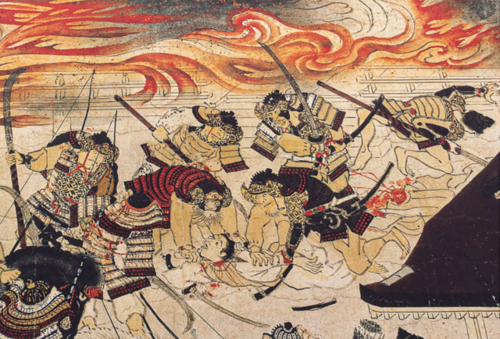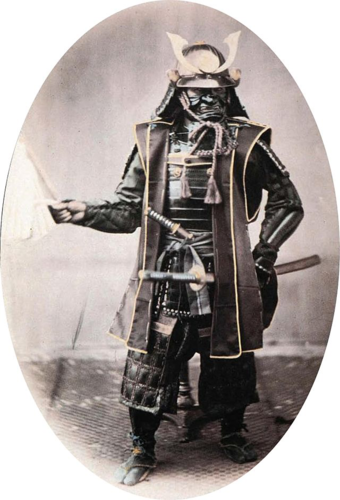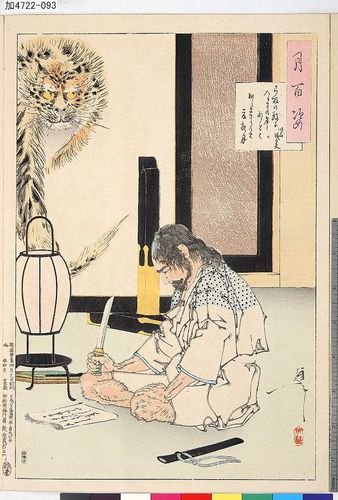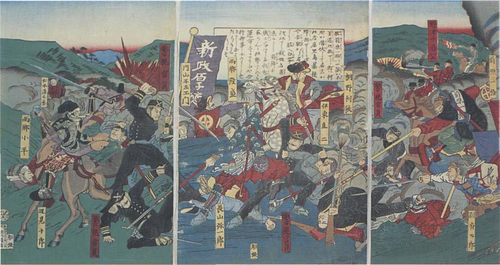Noiser
The Real History of the Samurai
Play Short History Of... The Samurai
The samurai were an elite group of legendary warriors whose exploits helped forge the very soul of Japan. But who exactly were these mysterious men and women?

The Samurai: Origins
Due to the lack of official records, it can sometimes be hard to separate truth from legend when dealing with the early history of the samurai. But we do know they originated as provincial warriors serving local nobles and landowners in 8th- and 9th-century Japan.
You see, Japanese nobles spent most of their time indoors, engaged in leisure activities and artistic pursuits. Practical matters, like tax collecting and empire expansion, were left in the hands of the military. Previously, Japan relied on a peasant conscript system, but this practice was abolished in 792 CE because it simply wasn’t effective enough. Peasants were poorly trained and unmotivated, and regional governors needed more reliable warriors.
In place of peasant conscripts, wealthy landowners began maintaining their own private armies consisting of professional warriors who served for payment or land rights. This led to the rise of the samurai class.
How War Shaped the Samurai
For years, the Japanese soldiers were embroiled in wars with the native Emishi clans. To outdo their enemy, the Japanese traded their crossbows for longbows. They learned to shoot arrows from horseback. They exchanged the straight sword for a single-edged curved blade, the katana, which was easier to unsheathe while riding. Metal armour, they realised, was too heavy and prone to rust, so they replaced it with leather. They incorporated their shields into this armour in the form of boxy shoulder flaps that moved to one side when firing an arrow. Even their hairstyles changed. They began wearing topknots with shaved sides to better secure their helmets. These helmets had a distinctive look, with flared side panels and strong, rounded tops. In other words, Japanese soldiers were beginning to resemble what we recognise today as samurai.

When Did the Samurai Become the Samurai?
In the 12th century, political battles began. Power-hungry men took to the streets of Kyoto, hoping to move up the political hierarchy. But they didn’t go alone. They brought protection in the form of trustworthy henchmen – trained fighters known as Samurai. Soon, two clans became dominant – the Taira and the Minamoto. Many battles followed, leading to the Genpei War – the first great conflict between rival samurai clans. After a series of bloody battles swept the country, the Minamoto clan finally gained the capital. The Taira, battered and bruised, were forced to retreat to their heartland in the west.
The battlefield was the stage upon which the samurai could make a name for themselves. Military promotions were awarded to only the most courageous, and as such, samurai warfare became a conspicuously performative affair. They started to decorate their armour with unique logos so that other samurai could identify them by sight. For example, the famous warrior Yoshit-sunay wore a helmet adorned with rabbit ears (a relatively unthreatening look for such a fearsome fighter). Perhaps this was a way of lulling his opponents into a false sense of security.
An Honourable Death
In battle, victory or death were the only options for the Samurai. Because of this, another custom arose – seppuku or hara-kiri (also known as “ritual suicide”). If a samurai found himself on the losing side, rather than face the shame of capture, he would choose instead to end his own life. To die a hero’s death, the samurai had to kill himself in the most painful way possible – by stabbing himself in the belly, drawing the blade across and then upward, literally disembowelling himself.
I have a theory about this, which is that it's actually a way of taking the easiest way out possible. Lieutenants cannot kill their master unless it's a mercy. By opening up your stomach, you're basically taking three days to die in excruciating pain. By doing that, your minions are within their rights, out of loyalty to you, to end your suffering by cutting off your head.
Jonathan Clements, historian and author of A Brief History of the Samurai

The End of the Samurai
Samurai helped rule Japan for centuries. Feudal lords employed them to defend territories against rivals, fight enemies identified by the government, and battle with hostile tribes and bandits. But, in 1868, Japan returned to imperial rule under the Meiji Emperor. Today, this is known as the Japanese Revolution of 1868.
After training up an army of rebel samurai, their leader, Saigo, launched the Satsuma Rebellion. He announced his intention of marching on Tokyo, but his attempt failed dismally. Saigo and his men were driven back by the Emperor’s conscript forces until there was nowhere left to run. The last of the samurai were cornered on a hillside in Kagoshima and killed by gunfire. The Satsuma Rebellion marked the end of the samurai era.

But the memory of these legendary warriors lives on into the 20th century and beyond. Culturally, they have inspired countless books, comics, television shows and films, and not just in Japan. Who could forget Tom Cruise’s 2003 epic - The Last Samurai - inspired by the life of Saigo?
Today, historians disagree over how we should think of the Samurai. Were they truly a class of elite martial artists, forever observing stringent codes of chivalry and loyalty? Or were the samurai essentially a bunch of romanticised thugs? Belligerent and self-important?
The truth is perhaps somewhere in the middle.
